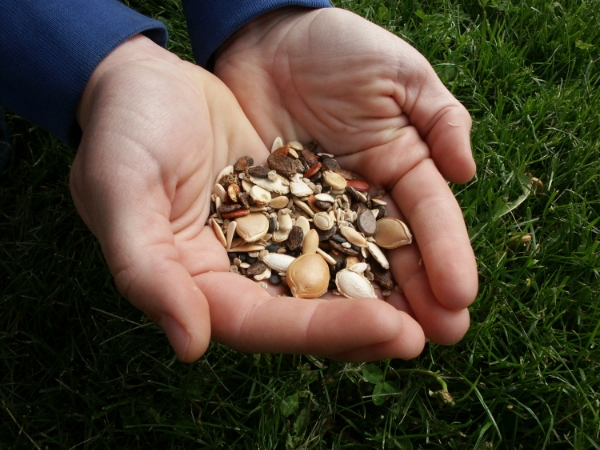What's the Difference? Open-Pollinated, Heirloom & Hybrid Seeds
/Deciding which seed to plant can be a daunting task.
The decision is often more complicated than simply trying to pick which beautiful tomatoes to grow.
Among the more important decisions every gardener makes is the choice between open-pollinated, hybrid, and heirloom seed varieties. Each of these seed types has something to offer, depending on the gardener's needs, interests, and values.
For seed-saving purposes, the most significant distinction among these types is that gardeners can save true-to-type seed from open-pollinated and heirloom varieties, but not hybrids.
Here are a few more distinctions that might help you decide what to grow this season:
Open-pollination is when pollination occurs by insect, bird, wind, humans, or other natural mechanisms.
Because there are no restrictions on the flow of pollen between individuals, open-pollinated plants are more genetically diverse. This can cause a greater amount of variation within plant populations, which allows plants to slowly adapt to local growing conditions and climate year-to-year. As long as pollen is not shared between different varieties within the same species, then the seed produced will remain true-to-type year after year.
An heirloom variety is a plant variety that has a history of being passed down within a family or community, similar to the generational sharing of heirloom jewelry or furniture.
An heirloom variety must be open-pollinated, but not all open-pollinated plants are heirlooms. While some companies create heirloom labels based on dates (such as a variety that is more than 50 years old), Seed Savers Exchange identifies heirlooms by verifying and documenting the generational history of preserving and passing on the seed.
Hybridization is a controlled method of pollination in which the pollen of two different species or varieties is crossed by human intervention.
Hybridization can occur naturally through random crosses, but commercially available hybridized seed, often labeled as F1, is deliberately created to breed a desired trait. The first generation of a hybridized plant cross also tends to grow better and produce higher yields than the parent varieties due to a phenomenon called ‘hybrid vigor’. However, any seed produced by F1 plants is genetically unstable and cannot be saved for use in following years. Not only will the plants not be true-to-type, but they will be considerably less vigorous. Gardeners who use hybrid plant varieties must purchase new seed every year. Hybrid seeds can be stabilized, becoming open-pollinated varieties, by growing, selecting, and saving the seed over many years.
So what's it going to be—hybrid, open-pollinated, or heirloom varieties?
While hybrids have their benefits, choosing open-pollinated varieties conserves the genetic diversity of garden vegetables and prevents the loss of unique varieties in the face of dwindling agricultural biodiversity. Furthermore, focusing on heirloom varieties creates a historical connection to gardening and food production, building a more sustainable future by carrying on our garden heritage.
By choosing open-pollinated and heirloom varieties, you have the ability to help conserve biodiversity and to contribute to the stories behind our seeds.














